|
Displaying items by tag: Matisse
If you’ve been meaning to make it to MoMA to check out “Picasso Sculpture,” you’ll need to plan ahead starting next week. Beginning November 10, MoMA is requiring visitors to purchase timed entrance tickets for the five-month exhibit, which opened September 14.
This isn’t the first time MoMA has implemented timed ticketing. Over the past seven years, the Tim Burton, Van Gogh, Bjork and two Matisse exhibits have also required viewers to enter at a particular time.
Musician Sting and wife Trudie Styler are selling more than 200 items from their art collection, previously housed in their former family home in London.
Works by Matisse, Picasso, Gustav Klimt and Ben Nicholson will be offered at auction at Christie's in February, as well as Sting's Steinway piano.
The auction house said the couple had collected the works "with passion and knowledge" over 20 years.
For two decades, Henry W. Bloch, co-founder of H&R Block, and his wife Marion, collected what they described as "pretty pictures" — mostly French Impressionist works by the likes of Degas, Matisse, and Monet. Nearly 30 of these paintings filled the walls of their Mission Hills, Kansas home.
Although these masterworks are not there now — you wouldn't know it by looking.
Last week, the Whitney Museum massively overhauled its online database. The museum of American art expanded its online collection from a paltry 700 works to around 21,000. The digital reserve now includes over 3,000 pieces by Edward Hopper, in addition to offerings from a wide swathe of art from the United States, including the likes of Mike Kelley and Martin Wong.
This virtual expansion comes on the heels of "Matisse," a cinematic rendering of the Matisse cut-out show on display at the Museum of Modern Art (MoMA) through February 10. The film, which includes footage from both the MoMA show and the earlier exhibition at the Tate Modern in London, is part of the “Exhibition on Screen” project, which “brings blockbuster art exhibitions from galleries around the world to a cinema near you,” according to the initiative’s website.
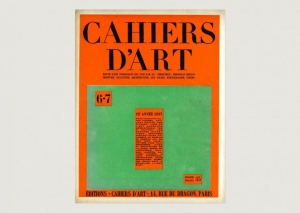
The publisher and art critic, Christian Zervos, founded the French art review, Cahiers d’Art, in 1926. The magazine ran without interruption from 1941 to 1943, until 1960 and featured artists such as Picasso, Matisse, Braque, Leger, Ernst, Calder, and Giacometti. Known for its striking layout and abundant photography, Cahiers d’Art also featured reviews written by the likes of Ernest Hemingway and Samuel Beckett. After being out of production for more than fifty years, Cahiers d’Art has been reborn.
Swedish collector and entrepreneur, Staffan Ahrenberg, bought the dormant publication after he walked by the still-operating Cahier d’Art gallery along the rue du Dragon in Paris. Ahrenberg re-launched Cahiers d’Art with former Art Basel director Sam Keller and the renowned curator Hans Ulrich Obrist as editors. The first issue features Ellsworth Kelly, Cyprien Gaillard, and Sarah Morris. As in the past, Cahiers d’Art will not contain advertisements nor will it follow a regular production schedule.
Major art world players including Larry Gagosian, Guggenheim boss Richard Armstrong, and Alfred Pacquement of the Pompidou Centre gathered in a tiny Left Bank gallery in Paris to celebrate the review’s return.
For the curators of Venezuela's most prestigious modern art museum, the recent reappearance of a Matisse that was stolen from their collection more than a decade ago ought to have been cause for joy and relief.
But the FBI sting operation that recovered the French painter's 1925 work Odalisque in Red Trousers in Miami last month has also resurrected awkward questions about more than a dozen other valuable pieces said to be "unaccounted for" at the Caracas Museum of Contemporary Art (MACCSI), including works by Jasper Johns, Henry Moore, Lucian Freud and Jesús Soto.
A former director and an investigative journalist have raised concerns about the works that may be missing, some of which are estimated to be worth as much as $3m (£2m).
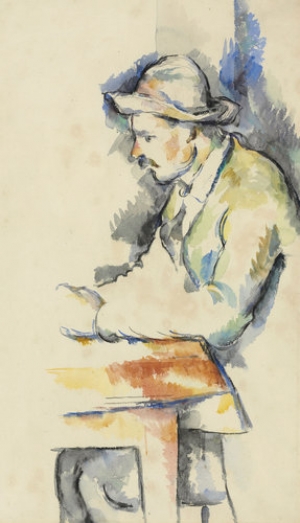
New collectors and old poured into Christie’s Rockefeller Center sales room on Tuesday night for the start of the big spring auctions. They may have come hoping for fireworks but instead sat through an anemic sale devoid of the kind of suspense and sky’s-the-limit bidding that can give these big-money evenings their excitement.
One reason was obvious: of the two auctions this week, Christie’s had far weaker material, with nothing to rival the attention-getting power of Munch’s famed pastel of “The Scream,” which is to come on the block at Sotheby’s on Wednesday.
“A number of people who have been in the market steadily over the last decade were bidders, and some who have only recently returned after dropping out for several years,” said Marc Porter, chairman and international head of private sales at Christie’s, adding that for the most part, the night’s buyers came from “traditional markets — America and Europe.”
The sale, which had been estimated to bring $90.5 million to $130.2 million, drew just over $117 million. Of the 31 lots offered, only three failed to sell.
(Final prices include the buyer’s commission to Christie’s: 25 percent of the first $50,000; 20 percent of the next $50,000 to $1 million and 12 percent of the rest. Estimates do not reflect commissions.)
Christie’s did have its own historically significant image, also a work on paper, but more of interest to connoisseurs than a trophy hunter who might try to snap up “The Scream.” It was “Card Player,” a watercolor by Cézanne of Paulin Paulet, a gardener on the estate of the artist’s family near Aix-en-Provence. A study for the artist’s famous “Card Players” series, it depicts Paulet absorbed in a game of cards. Three bidders competed for it, two on the telephone and a mystery man sitting glued to his cellphone in the second row. It was he who bought the watercolor for $17 million, or $19.1 million including Christie’s fees, just shy of its $20 million high estimate.
Where the watercolor will be heading is as unclear as where it was for nearly six decades, when scholars knew it just from black-and-white photographs. It was only recently discovered in the Dallas home of Dr. Heinz F. Eichenwald, a prominent collector who died in September.
One of the night’s few moments of passionate bidding occurred when “The Peonies,” a Matisse still life on the cover of the sale catalog, was bought by an unidentified European telephone bidder for $19.1 million. Painted in the summer of 1907 while the artist was vacationing in Collioure, a remote fishing village in southwest France, the colorful bowl of flowers had been estimated to fetch $8 million to $12 million.
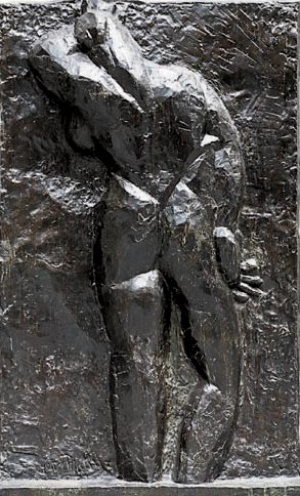
Since January experts at Sotheby’s have been trying to privately sell a suite of four bronze sculptures of a woman’s back that Matisse created over a period of 23 years beginning in 1908. The works belong to the Burnett Foundation in Forth Worth, and at the time the sale was announced, neither Sotheby’s nor the foundation would say what the asking price was, although dealers approached by the auction house reported that they were hoping for around $200 million for all four.
Now, as the fall auction season approaches and the sculptures remain unsold, Sotheby’s is announcing that it will auction the four works separately — in chronological order — over the next year, starting with the earliest and most classical of them all, “Back I,’’ which will be included in its Impressionist and modern art auction in New York on Nov. 2. It is estimated to bring $20 million to $30 million.
The foundation decided to sell the sculptures in November after another cast of the fourth back in the series brought $48.8 million at Christie’s. It was then, officials for the foundation said, that they realized the value of the four works far exceeded anything that could justify owning them, since its mission is to support health, education, human services and arts initiatives mostly in the Fort Worth area.
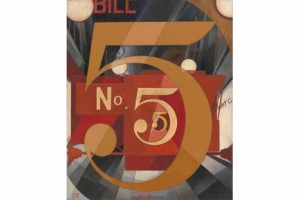
Exhibition Dates: October 13, 2011 – January 2, 2012
For more than 60 years, the Alfred Stieglitz Collection has been the cornerstone of The Metropolitan Museum of Art’s holdings of modern art from the first half of the 20th century. From October 13, 2011, through January 2, 2012, the Museum will present Stieglitz and His Artists: Matisse to O’Keeffe, the first large-scale exhibition of paintings, sculptures, drawings, and prints from Stieglitz’s personal collection, acquired by the Metropolitan in 1949. The exhibition will feature some 200 works by major European and American modernists, including Georgia O’Keeffe, Pablo Picasso, Henri Matisse, Constantin Brancusi, Vasily Kandinsky, Francis Picabia, Gino Severini, Marsden Hartley, John Marin, Charles Demuth, and Arthur Dove.
The exhibition is made possible by the Iris & B. Gerald Cantor Foundation.
In addition to being a master photographer, Alfred Stieglitz (1864-1946) was a visionary promoter of modern American and European art, and he assembled a vast art collection of exceptional breadth and depth. Through a succession of influential galleries that he ran in New York City between 1905 and 1946, Stieglitz exhibited many of the most important artists of the era and collected hundreds of works of art by his contemporaries.
This will be the first time since their acquisition in 1949 that the Museum’s vast holdings from the Stieglitz Collection—including many works on paper that are rarely on view—will be exhibited together.
Alfred Stieglitz played a pivotal role in the introduction of modern art into America and its subsequent development over the course of the first half of the 20th century. At his Little Galleries of the Photo-Secession (1905-17), known as ‘291,’ Stieglitz boldly showed the work of avant-garde European artists such as Auguste Rodin, Picasso, Matisse, Picabia, Brancusi, and Severini—sometimes before it was shown anywhere else in the United States. The first rooms of the exhibition Stieglitz and His Artists: Matisse to O’Keeffe will focus primarily on works by European artists. Among the highlights are: Picasso’s Woman Ironing (1901) and Standing Female Nude (1910), Kandinsky’s Improvisation 27 (Garden of Love II) (1912), and Brancusi’s Sleeping Muse (1910), as well as a suite of prints by Henri de Toulouse-Lautrec (1890s). The first half of the exhibition also includes a room of drawings by the Mexican caricaturist Marius de Zayas, who was a pivotal advisor to Stieglitz and played a major role in organizing some of the most avant-garde exhibitions at 291 in the 1910s.
In Stieglitz’s subsequent undertakings, first in borrowed space at the Anderson Galleries (1921-25) and later at his own galleries—the Intimate Gallery (1925-29) and An American Place (1929-46)—he refocused his energy on showing and supporting contemporary American art, which was not well represented in prestigious public and private collections at the time. The latter portion of the exhibition Stieglitz and His Artists will feature works by American painters whose careers he shepherded from the 1920s to 1946 and whose work he felt epitomized the authentic American experience: Arthur Dove, John Marin, and Georgia O’Keeffe. There also will be individual rooms devoted to the works of Charles Demuth and Marsden Hartley, including Demuth’s I Saw the Figure 5 in Gold (1928), and Hartley’s Portrait of a German Officer (1914). The exhibition will culminate in a gallery of some 14 works by O’Keeffe, such as her iconic paintings Black Iris (1926) and Cow’s Skull: Red, White, and Blue (1931).
Among the other artists featured in the exhibition are: Gordon Craig, Henri Edmund Cross, Arthur B. Davies, Gaston Lachaise, Stanton Macdonald-Wright, Diego Rivera, Paul Signac, Félicien Rops, and Abraham Walkowitz.
In addition to the paintings, sculptures, drawings, and prints displayed, the exhibition will include a number of photographs by the Photo-Secessionists, as well as publications by the Stieglitz Circle, all from his personal collection.
About the Collection
After his death in 1946, Stieglitz’s wife, Georgia O’Keeffe, as executrix of his estate, decided which institutions would receive gifts of art from his collection. The Metropolitan Museum was very fortunate to receive the largest share of Stieglitz’s personal collection: more than 400 paintings, sculptures, drawings, and prints. The remaining works from his collection were distributed among the Art Institute of Chicago, Philadelphia Museum of Art, National Gallery of Art in Washington, D.C., Fisk University in Nashville, and Yale University’s Beinecke Rare Book and Manuscript Library in New Haven.
Stieglitz and His Artists: Matisse to O’Keeffe is organized by Lisa Mintz Messinger, Associate Curator in the Museum’s Department of Nineteenth-Century, Modern, and Contemporary Art.
The exhibition will be accompanied by a major scholarly catalogue of the entire collection, edited by Lisa Mintz Messinger, with contributions by 11 Metropolitan Museum curators, researchers, and conservators. The catalogue will feature 440 full-color illustrations, an introductory essay, individual essays on the artists, and entries on all 409 paintings, sculptures, drawings, and prints from the Alfred Stieglitz Collection at the Metropolitan. Published by The Metropolitan Museum of Art and Yale University Press, the catalogue will be available for sale in the Met’s book shops ($65, hardcover).
The Museum will offer an array of education programs for this exhibition, including subscription lectures, a Sunday at the Met program, gallery talks, films, and services for visitors with disabilities.
An audio tour, part of the Museum’s Audio Guide Program, will be available for rental ($7, $6 for Members, $5 for children under 12).
The Audio Guide is sponsored by Bloomberg.
Stieglitz and His Artists will be complemented by the presentation of Photographic Treasures from the Collection of Alfred Stieglitz in the Museum’s Howard Gilman Gallery from October 13, 2011, through February 26, 2012. This installation will feature 45 masterpieces from Stieglitz’s collection of photography, including rarely seen works from the turn of the 20th century by Anne Brigman, Alvin Langdon Coburn, F. Holland Day, Gertrude Käsebier, Joseph Keiley, Heinrich Kühn, Edward Steichen, Clarence White, and others.
Stieglitz and His Artists also will be featured on the Museum’s website at www.metmuseum.org.
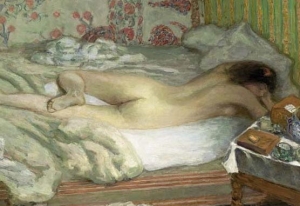
When Gertrude Stein published The Autobiography of Alice B. Toklas in 1933, all hell broke loose. Her hugely entertaining memoir tells the story of her early years in Paris, when her apartment in the rue de Fleurus became the most celebrated literary and artistic salon of the 20th century.
Readers were gripped by accounts of Gertrude’s Saturdays when visitors mingled with avant-garde artists, writers and collectors in rooms hung from floor to ceiling with the paintings by the artists she collected and promoted – including Renoir, Gauguin, Cézanne, Toulouse-Lautrec Matisse, Picasso and Juan Gris.
Her account of those years became an instant bestseller, but within the Stein family circle its publication caused consternation. For in it, Gertrude implied that she alone discovered Matisse and Picasso, downplaying the contribution of her two brothers Leo and Michael, and of Michael’s wife Sara. In truth, the four siblings acquired no fewer than 180 works by Matisse and Picasso alone, and all four were equally generous in providing financial and moral support to unknown artists. Leo was particularly scathing about the way his self-promoting sister wrote him out of the story. “Practically everything that she says of our activities before 1911 is false both in fact and implication… God what a liar she is!”
The massive exhibition devoted to the Stein Family that opens tomorrow at the Grand Palais sets the record straight. As the show documents in works of art, written and spoken words and scores of photographs, the Steins may not have been midwives at the birth of modern art, but they were certainly in the delivery room. What’s more, by admitting into their Saturday soirées anyone, whether they were interested in progressive painting or not, the Steins did as much as anyone to promote the culture of modernism. In the years when Picasso did not exhibit publically, the only way to see his work was to show up at an evening either with Gertrude and Leo in the rue de Fleurus or with Michael and Sara around the corner in the rue Madame. Matisse’s colour-saturated portraits and landscapes looked much less alarming when seen in a domestic setting, hanging alongside Renoirs or Gauguin, than they did in the scrum of the Salon d’Automne.
An educated, upper middle-class family originally from Pennsylvania, the Steins had money, but not a great deal of it, and were Jewish, but not religious. It was Leo who set the ball rolling when in 1902 he settled in Paris after two years studying art history in Florence. Shy and introspective, he was the driving force behind the collection and was able to recognise the ways in which young artists built on the achievements of the giants of French art in the 1870s such as Degas, Renoir, Cézanne and Manet.
This is could see that Picasso’s Boy Leading a Horse looked back to Cézanne’s Bathers, and Matisse’s Blue Nude, Memory of Biskra (1907) to the reclining nudes of Giorgione and Titian by way of Manet’s Olympia. It was Leo who (with Gertrude) bought Cézanne’s Woman with a Fan and he who acquired masterpieces from Picasso’s blue and rose periods. Leo defied conventional taste to purchase Matisse’s Lady in a Hat from the Salon d’Autumne of 1906 – not to mention owning the same artist’s Joy of Life, now in the Barnes Collection. Little wonder that Alfred Baar, the first director of the Museum of Modern Art, said of Leo that “for the two brief years between 1905 and 1907 he was possibly the most discerning art collector in the world”.
|
|
|
|
|